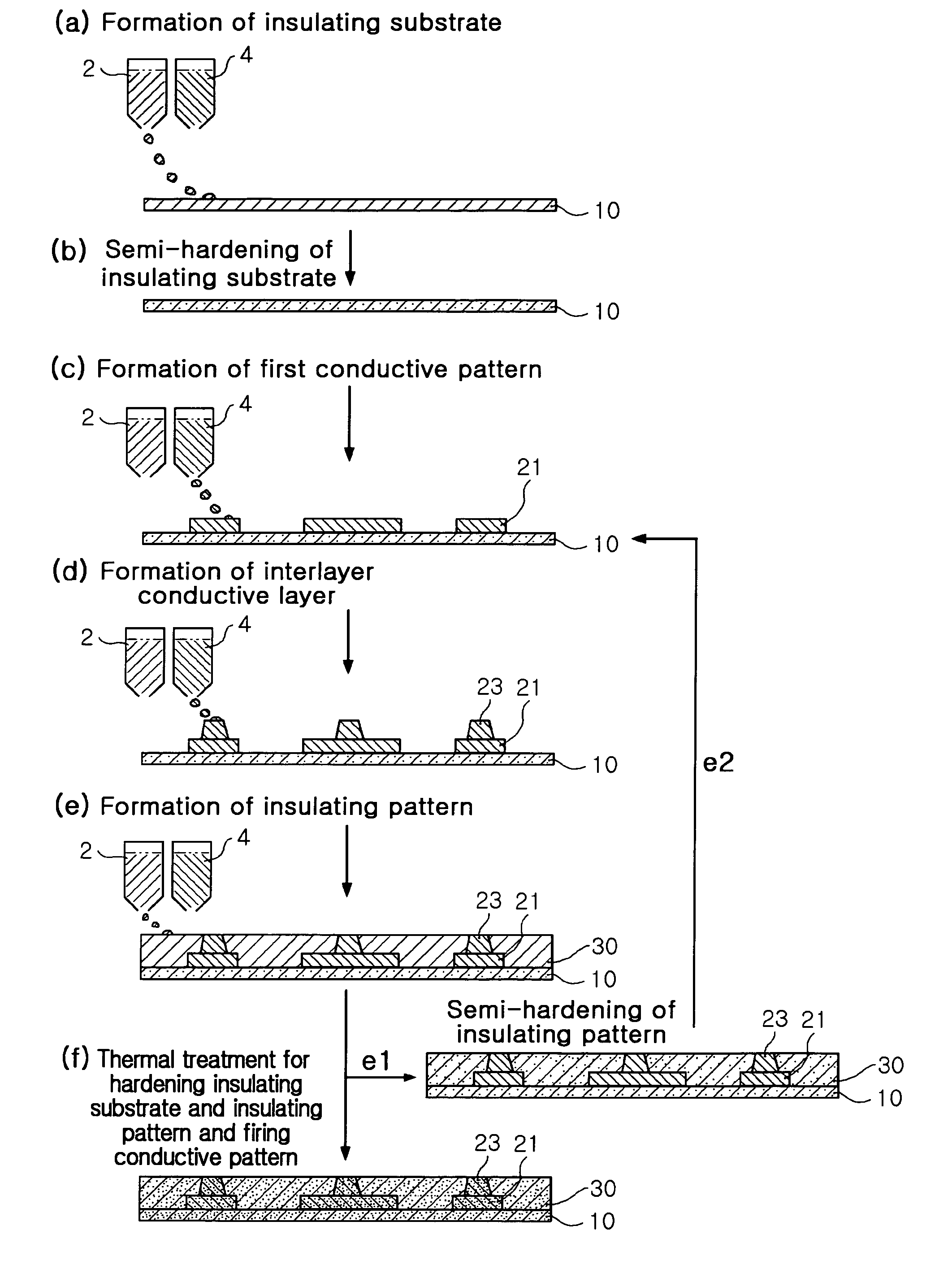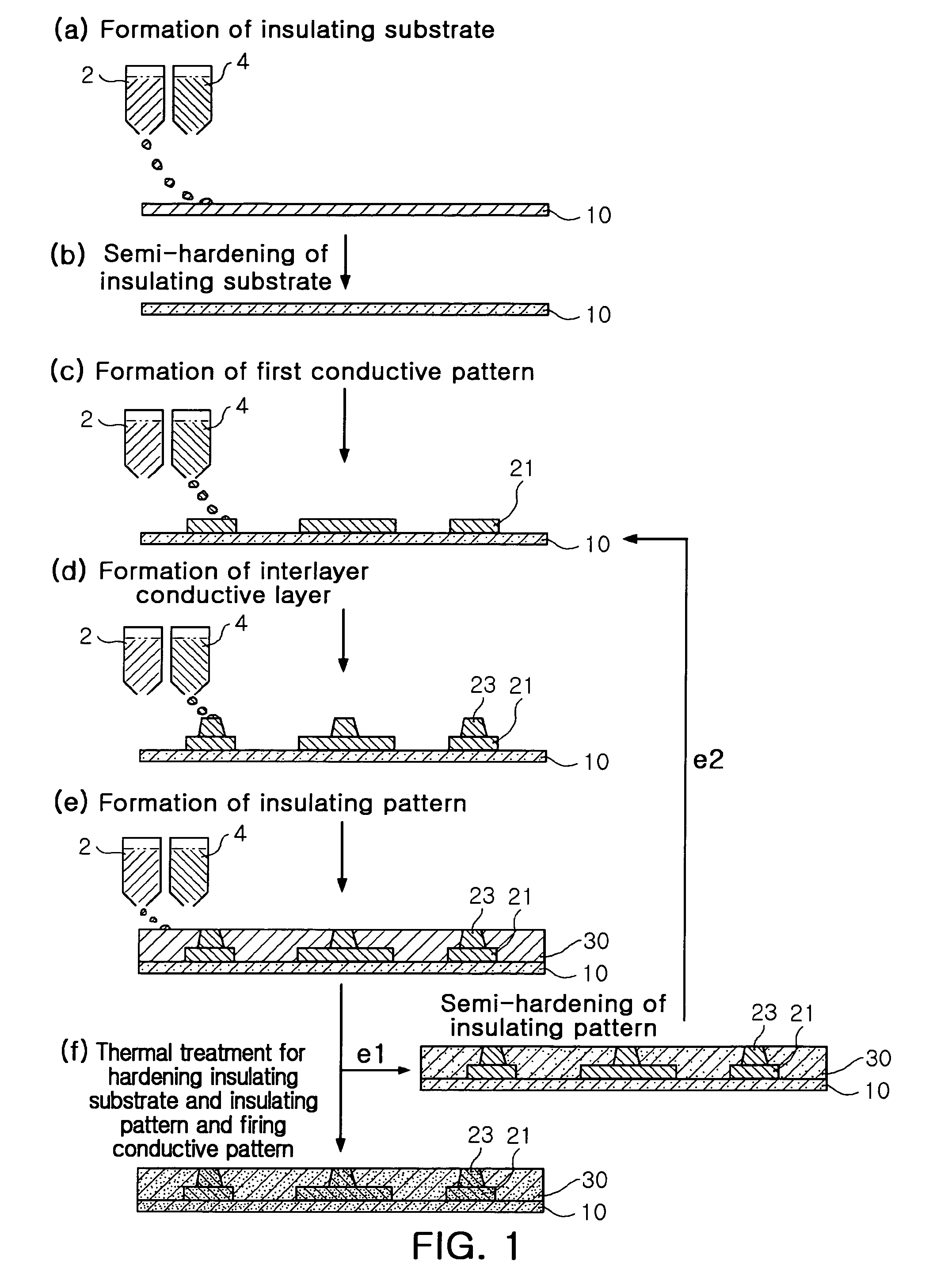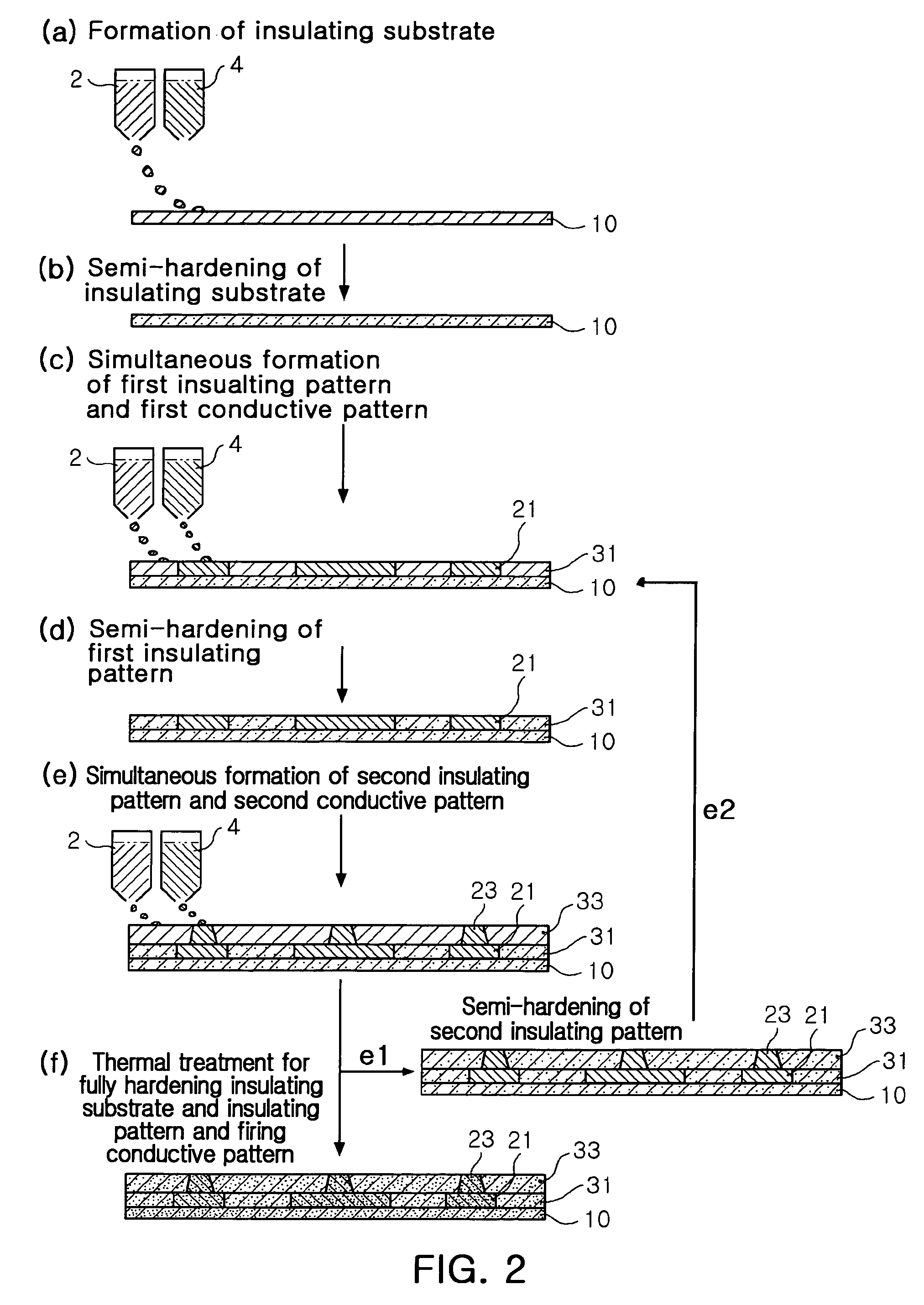Printed wiring board and method for manufacturing the same
a printing method and wiring board technology, applied in the direction of printed circuit manufacturing, printed circuit aspects, conductive pattern formation, etc., can solve the problems of low peel strength between the insulating layer and the conductive layer, complex subtractive process, waste liquid disposal, etc., and achieve the effect of increasing the peel strength therebetween
- Summary
- Abstract
- Description
- Claims
- Application Information
AI Technical Summary
Benefits of technology
Problems solved by technology
Method used
Image
Examples
embodiment 1
[0075]Silver nitride and PVP (MW=10,000) were mixed at a mole ratio of 1:8, and dimethyl formamide (DMF) was added as a reducing agent to a purified water at a volume ratio of 1:1. Then, the reaction was conducted at 100° C. for 30 minutes. Consequently, the conductive ink with 50-nm silver nano particles caped with PVP was prepared.
[0076]The insulating ink was prepared by mixing polyimide precursor, photo-polymerization initiator, and crosslinking agent, as shown in Table 1 below. In Table 1, PAA represents polyamic acid that is the polyimide precursor, MBHP (4,4′-methylenebis[2,6-bis(hydroxymthyl)]phenol) was used as the crosslinking agent. PTMA(5-propylsulfonly-oxyimino-5H-thiophen-2-ylidene)-2-(methylphenyl)-acetonitrile) was used as the photo-polymerization initiator.
[0077]As shown in FIGS. 1(a) and 1(b), the insulating substrate was formed by printing the insulating ink using the inkjet process and then was dried at 100° C., and was semi-hardened by irradiating UV rays. As sho...
embodiment 2
[0081]Silver nitride and PVP (MW=10,000) were mixed at a mole ratio of 1:8, and dimethyl formamide (DMF) was added as a reducing agent to a purified water at a volume ratio of 1:1. Then, the reaction was conducted at 100° C. for 30 minutes. Consequently, the conductive ink with 50-nm silver nano particles caped with PVP was prepared.
[0082]1,1′-(methylene-di-4,1-phenylene)bismaleimide was dissolved in the mixed solution of methyl ethyl ketone (MEK) and dimethyl formamide (DMF) and thus the insulating ink of 15 cps was obtained. PTMA (5-propylsulfonyl-oxyimino-5H-thiophen-2-ylidene)-2-(methylphenyl)-acetonitrile) was used as the photo-polymerization initiator.
[0083]As shown in FIGS. 2(a) and 2(b), the insulating substrate was formed by printing the insulating ink using the inkjet process and then was dried at 100° C., and was semi-hardened by irradiating UV rays. As shown in FIG. 2(c), the first conductive pattern and the first insulating pattern were formed by printing the conductive...
PUM
| Property | Measurement | Unit |
|---|---|---|
| wt % | aaaaa | aaaaa |
| wt % | aaaaa | aaaaa |
| temperature | aaaaa | aaaaa |
Abstract
Description
Claims
Application Information
 Login to View More
Login to View More - R&D
- Intellectual Property
- Life Sciences
- Materials
- Tech Scout
- Unparalleled Data Quality
- Higher Quality Content
- 60% Fewer Hallucinations
Browse by: Latest US Patents, China's latest patents, Technical Efficacy Thesaurus, Application Domain, Technology Topic, Popular Technical Reports.
© 2025 PatSnap. All rights reserved.Legal|Privacy policy|Modern Slavery Act Transparency Statement|Sitemap|About US| Contact US: help@patsnap.com



